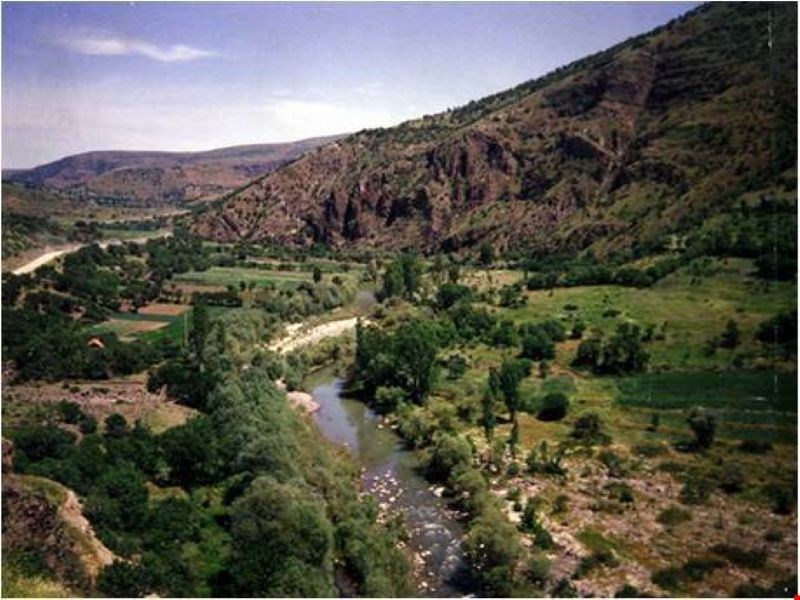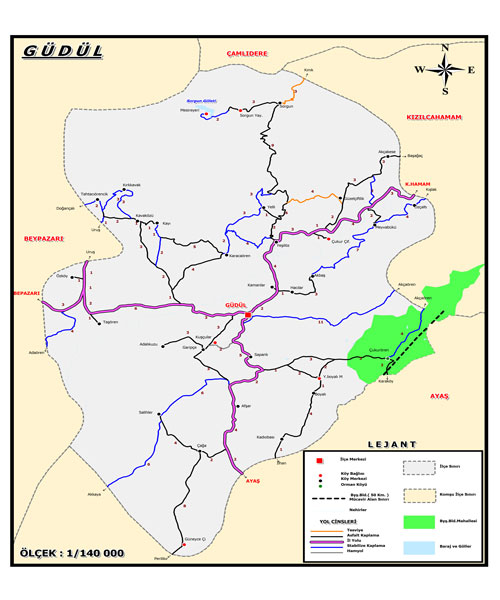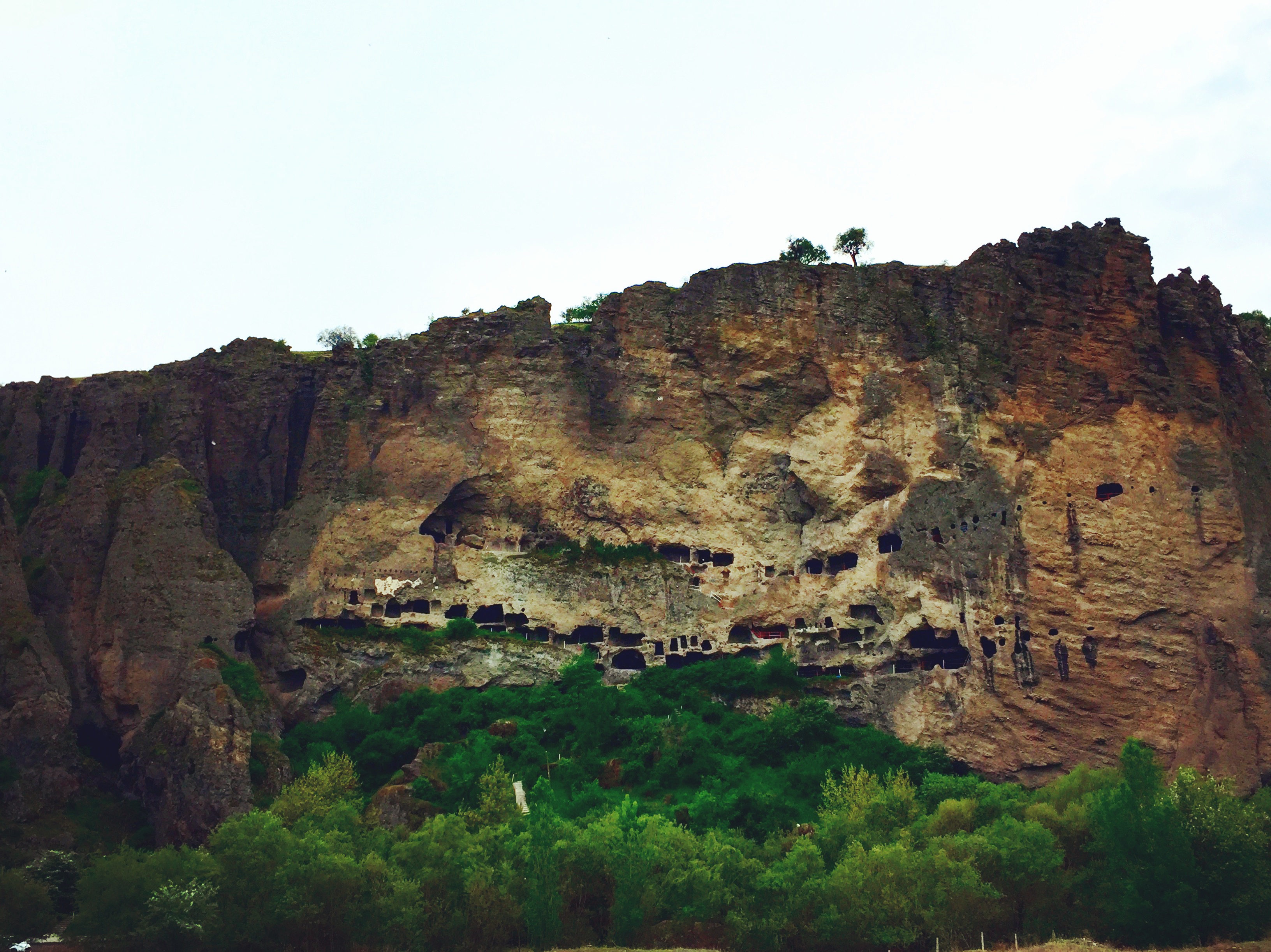Güdül is a district located in the Central Anatolia Region of Türkiye, affiliated with Ankara Province. The district is approximately 90 kilometers away from Ankara city center and is situated in the northwestern direction of the province. It is bordered by Ayaş to the east, Beypazarı to the west, Kızılcahamam to the north, and Polatlı districts to the south. With an area of approximately 540 km², Güdül is among Ankara's smallest districts in terms of population.

Ankara, Güdül - General View (Güdül Municipality)
History
Güdül and its surroundings have been a settlement area for various civilizations throughout history. Archaeological findings indicate that settlement in the region dates back to the Neolithic Age. Rock-carved structures and caves located around Kirmir Valley contain traces of early period settlements. Phrygians, Galatians, Romans, and Byzantines are the main civilizations that established dominance in the region. Roman-era tomb structures and cisterns reveal that Güdül was an important settlement during this period. Following the Byzantine era, the Anatolian Seljuk State and then the Ottoman Empire gained control of the region. During the Ottoman period, it was registered as a sub-district (nahiye) of the Ankara Sanjak.
Güdül gained district status in 1926 with the Republican era. A decrease in its population has been observed due to migration movements; however, it has continued to preserve its historical and cultural structure.
Geography and Climate
Güdül has a rugged and mountainous topography. The district has a structure dominated by forested and steppe areas. The Kirmir Stream, which passes through the district, is a tributary of the Sakarya River and, along with its valley, forms an important natural landscape. Kirmir Valley is valuable for its geological features, including caves, rock formations, and fossil beds. Ancient settlement traces and rock-cut tombs are present in the natural cavities around the valley.

Ankara, Güdül - Kirmir Stream (Güdül District Governate)
The district is dominated by the continental climate specific to the Central Anatolia Region. Summers are hot and dry, while winters are cold and snowy. Rainfall increases during spring and autumn months. These climatic conditions provide a suitable environment for cereal farming and fruit cultivation.
Population and Demographic Structure
According to data from the Güdül District Governate, the district's population is 8,521 people. Güdül's population has decreased, especially since the 1950s, due to migration to metropolitan cities. There are 31 neighborhoods affiliated with the district. Approximately 20 villages are located outside the district center, and the proportion of the elderly population is high in most of these settlements.

Ankara, Güdül Map (Ankara Governorship)
Economy
The district's economy is largely based on agriculture and animal husbandry. In addition to products such as wheat, barley, chickpeas, and lentils, fruits like apples, pears, and grapes are also cultivated. The Güdül apple, unique to the district, is in demand in local markets. Small ruminant husbandry, especially sheep and goat breeding, holds an important place among economic activities.
In recent years, interest in natural and organic products has increased. Products such as honey, molasses, village bread, and homemade tomato paste are among the local production items contributing to the district's economy.
Tourism, Culture and Cuisine
Güdül offers various opportunities for nature tourism, hiking routes, and cultural excursions. The natural beauties and hiking trails along Kirmir Valley; Güdül Caves, Roman-era rock tombs, and Güdül houses with traditional architectural features are of tourist importance. Local festivals and fairs held in the district are included in the cultural event calendar.
The İnönü Caves, located approximately 1 kilometer from the district center, are situated on Kirmir Valley. Consisting of rooms carved into soft rock slopes, the caves bear similarities to rock settlements in the Cappadocia region.

Ankara, Güdül - İnönü Caves (Güdül Municipality)
Various elements of traditional Anatolian culture are kept alive in Güdül. Handicrafts, folk dances, traditional wedding practices, and local dishes are parts of the cultural heritage.
The district's culinary culture is shaped by dishes specific to the Central Anatolia Region. Tarhana soup, chickpea stew with meat, keşkek, tandoor kebab, and village bread are commonly consumed dishes. Additionally, mulberry molasses, walnut sausage (cevizli sucuk), erişte (homemade pasta), and dried legume products are offered for daily consumption and in local markets.


